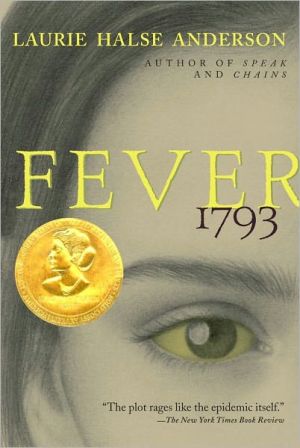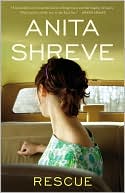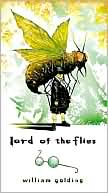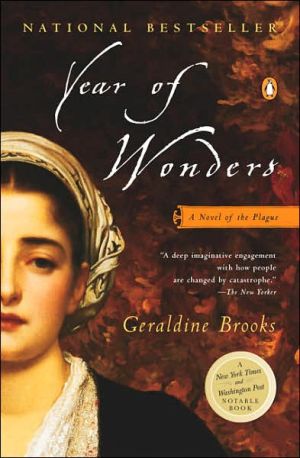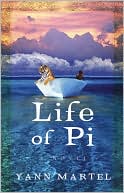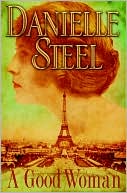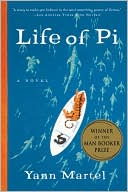Fever 1793
During the summer of 1793, Mattie Cook lives above the family coffee shop with her widowed mother and grandfather. Mattie spends her days avoiding chores and making plans to turn the family business into the finest Philadelphia has ever seen. But then the fever breaks out.\ Disease sweeps the streets, destroying everything in its path and turning Mattie's world upside down. At her feverish mother's insistence, Mattie flees the city with her grandfather. But she soon discovers that the...
Search in google:
It's late summer 1793, and the streets of Philadelphia are abuzz with mosquitoes and rumors of fever. Down near the docks, many have taken ill, and the fatalities are mounting. Now they include Polly, the serving girl at the Cook Coffeehouse. But fourteen-year-old Mattie Cook doesn't get a moment to mourn the passing of her childhood playmate. New customers have overrun her family's coffee shop, located far from the mosquito-infested river, and Mattie's concerns of fever are all but overshadowed by dreams of growing her family's small business into a thriving enterprise. But when the fever begins to strike closer to home, Mattie's struggle to build a new life must give way to a new fight-the fight to stay alive.Publishers WeeklyThe opening scene of Anderson's ambitious novel about the yellow fever epidemic that ravaged Philadelphia in the late 18th century shows a hint of the gallows humor and insight of her previous novel, Speak. Sixteen-year-old Matilda "Mattie" Cook awakens in the sweltering summer heat on August 16th, 1793, to her mother's command to rouse and with a mosquito buzzing in her ear. She shoos her cat from her mother's favorite quilt and thinks to herself, "I had just saved her precious quilt from disaster, but would she appreciate it? Of course not." Mattie's wit again shines through several chapters later during a visit to her wealthy neighbors' house, the Ogilvies. Having refused to let their serving girl, Eliza, coif her for the occasion, Mattie regrets it as soon as she lays eyes on the Ogilvie sisters, who wear matching bombazine gowns, curly hair piled high on their heads ("I should have let Eliza curl my hair. Dash it all"). But thereafter, Mattie's character development, as well as those of her grandfather and widowed mother, takes a back seat to the historical details of Philadelphia and environs. Extremely well researched, Anderson's novel paints a vivid picture of the seedy waterfront, the devastation the disease wreaks on a once thriving city, and the bitterness of neighbor toward neighbor as those suspected of infection are physically cast aside. However, these larger scale views take precedence over the kind of intimate scenes that Anderson crafted so masterfully in Speak. Scenes of historical significance, such as George Washington returning to Philadelphia, then the nation's capital, to signify the end of the epidemic are delivered with more impact than scenes of great personal significance to Mattie. Ages 10-14. (Sept.) Copyright 2000 Cahners Business Information.
CHAPTER TWO -- August 16th, 1793 \ ...the first and most principal to be, a perfect skill and knowledge in cookery...because it is a duty well belonging to women.\ -- Gervase Markham\ The English House Wife, 1668\ As soon as I stepped into the kitchen, Mother started her lecture.\ "Too much sleep is bad for your health, Matilda." She slipped a freshly made ball of butter into a stone crock. "It must be a grippe, a sleeping sickness."\ I tried not to listen to her. I had not cleared the wax from my ears all summer, hoping it would soften her voice. It had not worked.\ "You should be dosed with fish oil. When I was a girl..." She kept talking to herself as she carried a steaming pot of water outside to rinse the butter churn.\ I sat down at the table. Our kitchen was larger than most, with an enormous hearth crowded with pots and kettles, and two bake ovens built into the brickwork beside it. The size of the room did not match the size of our family. We were only three: Mother, Grandfather, and me, plus Eliza who worked for us. But the roomy kitchen could feed one hundred people in a day. My family owned the Cook Coffeehouse. The soon-to-be famous Cook Coffeehouse, Grandfather liked to say.\ My father had built our home and business after the War for Independence ended in 1783. I was six years old. The coffeehouse sat just off the corner of Seventh and High Streets. At first we were lucky if a lost farmer strayed in, but business improved when President Washington's house was built two blocks away.\ Father was a carpenter by trade, and he built us a sturdy home. The room where we served customers filled most of the first floor and had four large windows. The kitchen was tucked into the back, filled with useful shelves and built-in cupboards to store things. We could have used a sitting room, truth be told. Father would have added one on if he had lived. But he fell off a ladder and died of a broken neck two months after the coffeehouse opened. That's when Grandfather joined us.\ A coffeehouse was a respectable business for a widow and her father-in-law to run. Mother refused to serve spirits, but she allowed card games and a small bit of gambling as long as she didn't have to see it. By midday the front room was usually crowded with gentlemen, merchants, and politicians enjoying a cup of coffee, a bite to eat, and the news of the day. Father would have been proud. I wondered what he would have thought of me.\ "Good morning," Eliza said loudly, startling me. "I thought you were going to sleep the day away. Have you eaten?" She set a sack of coffee beans on the table.\ "I'm starving," I said, clutching my stomach.\ "As usual," she said with a smile. "Let me get you something quick."\ Eliza was the coffeehouse cook. Mother couldn't prepare a meal fit for pigs. I found this amusing, considering our last name was Cook. In a manner, though, it was serious. If not for Eliza's fine victuals, and the hungry customers who paid to eat them, we'd have been in the streets long ago. Mother's family had washed their hands of her when she ran off to marry a carpenter, a tradesman (the horror!), when she was but seventeen. So we were very fond of Eliza.\ Like most blacks in Philadelphia, Eliza was free. She said Philadelphia was the best city for freed slaves or freeborn Africans. The Quakers here didn't hold with slavery and tried hard to convince others that slavery was against God's will. Black people were treated different than white people, that was plain to see, but Eliza said nobody could tell her what to do or where to go, and no one would ever, ever beat her again.\ She had been born a slave near Williamsburg, Virginia. Her husband saved up his horseshoeing money and bought her freedom right after they were married. She told me that was the best day of her life. She moved to Philadelphia and cooked for us, saving her wages to set her husband free.\ When I was eight, she got a letter saying her husband had been killed by a runaway horse. That was her worst day. She didn't say a word for months. My father had only been dead two years, so Mother knew just what lay in Eliza's heart. They both supped sorrow with a big spoon, that's what Mother said. It took years, but the smile slowly returned to Eliza's face. She didn't turn sour like Mother did.\ Eliza was the luckiest person I knew. She got to walk from the river past shop windows, market stalls, and the courthouse up to Seventh Street every morning. She told stories even better than Grandfather, and she knew how to keep a secret. She laughed once when I told her she was my best friend, but it was the truth.\ She dished up a bowl of oatmeal from a pot that hung by the side of the hearth, then carefully set it in front of me. "Eat up," she said. One corner of her mouth turned up just a bit and she winked.\ I tasted the oatmeal. It was sweet. Eliza had hidden a sugar lump at the bottom of the bowl.\ "Thank you," I whispered.\ "You're welcome," she whispered back.\ "Why is Polly late?" I asked. "Have you seen her?"\ Eliza shook her head. "Your mother is in a lather, I promise you," she warned. "If Polly doesn't get here soon, she may need to find herself another position."\ "I bet she's dawdling by the forge," I said, "watching Matthew work with his shirt collar open."\ "Maybe she's ill," Eliza said. "There's talk of sickness by the river."\ Mother strode into the room carrying wood for the fire.\ "Serving girls don't get sick," Mother said. "If she doesn't appear soon, you'll have to do her chores as well as your own, Matilda. And where is your grandfather? I sent him to inquire about a box of tea an hour ago. He should have returned by now."\ "I'd be happy to search for him," I offered. "I could look for Polly, too."\ Mother added wood to the fire, poking the logs until the flames jumped. The delicate tip of her shoe tapped impatiently. "No. I'll go. If Father comes back, don't let him leave. And Matilda, see to the garden."\ She quickly tied a bonnet under her chin and left, the back door closing behind her with the sharp sound of a musket shot.\ "Well," said Eliza. "That's it, then. Here, have some veal and corn bread. Seems like you've a long day ahead of you."\ After she cut me two slices of cold veal and a thick piece of fresh corn bread, Eliza started to make gingerbread, one of her specialties. Nutmeg and cinnamon perfumed the air as she ground the spices with a pestle. If not for the heat, I could have stayed in the kitchen for an eternity. The house was silent except for the popping of the applewood in the fire, and the tall clock ticking in the front room. I took a sip from a half-filled mug on the table.\ "Ugh! It's coffee!" Black coffee, bitter as medicine. "How can you drink this?" I asked Eliza.\ "It tastes better if you don't steal it," she answered. She took the cup from my hands. "Pour your own and leave mine be."\ "Are we out of cider?" I asked. "I could get some at the marketplace."\ "Oh, no," Eliza said. "You'll stay right here. Your mother needs your help, and that poor garden is like to expire. It is time for you to haul some water, little Mattie."\ Little Mattie indeed. Another month and I'd be almost as tall as Eliza. I hated to be called "little."\ I sighed loudly, put my dishes in the washtub, and tucked my hair into my mob cap. I tied a disreputable straw hat atop the cap, one I could never wear in the street, and snatched a bite of dough from Eliza's bowl before I ran outside.\ The garden measured fifty paces up one side and twenty along the other, but after six weeks of drought it seemed as long and wide as a city block, filled with thousands of drooping plants crying for help.\ I dropped the bucket into the well to fill it with water, then turned the handle to bring it back up again. Little Mattie, indeed. I was big enough to be ordered around like an unpaid servant. Big enough for mother to grumble about finding me a husband.\ I carried the water to the potato patch and poured it out too fast. Big enough to plan for the day when I would no longer live here.\ If I was going to work as hard as a mule, it might as well be for my own benefit. I was going to travel to France and bring back fabric and combs and jewelry that the ladies of Philadelphia would swoon over. And that was just for the dry goods store. I wanted to own an entire city block -- a proper restaurant, an apothecary, maybe a school, or a hatter's shop. Grandfather said I was a Daughter of Liberty, a real American girl. I could steer my own ship. No one would call me little Mattie. They would call me "Ma'am."\ "Dash it all." I had watered a row of weeds.\ As I returned to the well, Mother came through the garden gate.\ "Where's Polly?" I asked as I dropped the bucket down the well. "Did you pass by the blacksmith's?"\ "I spoke with her mother, with Mistress Logan," Mother answered softly, looking at her neat rows of carrots.\ "And?" I waved a mosquito away from my face.\ "It happened quickly. Polly sewed by candlelight after dinner. Her mother repeated that over and over, 'she sewed by candlelight after dinner.' And then she collapsed."\ I released the handle and the bucket splashed, a distant sound.\ "Matilda, Polly's dead."\ Copyright © 2000 by Laurie Halse Anderson
\ From the PublisherSchool Library Journal starred review Readers will be drawn in by the characters and will emerge with a sharp and graphic picture of another world.\ The New York Times Book Review A gripping story about living morally under the shadow of rampant death.\ VOYA A vivid work, rich with well-drawn characters.\ The New York Times Book Review The plot rages like the epidemic itself.\ \ \ \ \ \ Publishers Weekly\ - Publisher's Weekly\ The opening scene of Anderson's ambitious novel about the yellow fever epidemic that ravaged Philadelphia in the late 18th century shows a hint of the gallows humor and insight of her previous novel, Speak. Sixteen-year-old Matilda "Mattie" Cook awakens in the sweltering summer heat on August 16th, 1793, to her mother's command to rouse and with a mosquito buzzing in her ear. She shoos her cat from her mother's favorite quilt and thinks to herself, "I had just saved her precious quilt from disaster, but would she appreciate it? Of course not." Mattie's wit again shines through several chapters later during a visit to her wealthy neighbors' house, the Ogilvies. Having refused to let their serving girl, Eliza, coif her for the occasion, Mattie regrets it as soon as she lays eyes on the Ogilvie sisters, who wear matching bombazine gowns, curly hair piled high on their heads ("I should have let Eliza curl my hair. Dash it all"). But thereafter, Mattie's character development, as well as those of her grandfather and widowed mother, takes a back seat to the historical details of Philadelphia and environs. Extremely well researched, Anderson's novel paints a vivid picture of the seedy waterfront, the devastation the disease wreaks on a once thriving city, and the bitterness of neighbor toward neighbor as those suspected of infection are physically cast aside. However, these larger scale views take precedence over the kind of intimate scenes that Anderson crafted so masterfully in Speak. Scenes of historical significance, such as George Washington returning to Philadelphia, then the nation's capital, to signify the end of the epidemic are delivered with more impact than scenes of great personal significance to Mattie. Ages 10-14. (Sept.) Copyright 2000 Cahners Business Information.\ \ \ Publishers WeeklyPW called this ambitious novel about the yellow fever epidemic that ravaged 18th-century Philadelphia "extremely well researched. However, larger scale views take precedence over the kind of intimate scenes that Anderson crafted so masterfully in Speak." Ages 10-up. (Mar.) Copyright 2001 Cahners Business Information.\ \ \ \ \ VOYASet in Philadelphia, the nation's capital at the end of the eighteenth century, this engrossing and well-written story chronicles one young girl's experiences during the yellow fever outbreak. Fourteen-year-old Matilda Cooke works for her widowed mother in their family's coffee shop. She faces a great struggle when it becomes clear that the city is in the midst of an epidemic from which no one is invulnerable. When her mother becomes gravely ill, she forces Matty to leave the city with her grandfather to escape the risk of infection. Matty eventually contracts the illness but recovers and returns to Philadelphia in search of her mother and her former existence. Fever 1793 is a vivid work, rich with well-drawn and believable characters. Unexpected events pepper the top-flight novel that combines accurate historical detail with a spellbinding story line. Of note to history teachers, the text includes an appendix that offers additional information on both the medical and burial practices of the period as well as several events and organizations depicted in the book. Matty is a strong female protagonist faced with horrific circumstances beyond her control, and her story will appeal to both genders in grades six through twelve. The book's first-person account of the epidemic's personal side is highly recommended for all public and school libraries. Booktalk this important work, and libraries will not be able to keep copies on the shelves. Appendix. VOYA CODES: 5Q 4P M J S (Hard to imagine it being any better written; Broad general YA appeal; Middle School, defined as grades 6 to 8; Junior High, defined as grades 7 to 9; Senior High, defined as grades 10 to 12). 2000, Simon & Schuster,256p, $16. Ages 12 to 18. Reviewer: Dr. Stefani Koorey \ SOURCE: VOYA, December 2000 (Vol. 23, No. 5)\ \ \ \ \ \ Children's LiteratureThe best historical fiction is the kind that immerses you in the time period through the mindset of a primary character. Anderson's Mattie Cook does just that. In this diary based novel, we entire the harrowing experience of a yellow fever epidemic in Philadelphia in 1793. Mattie dreams of turning the family coffeehouse into a booming business and struggles to cope with her strict mother. But those issues are pushed aside when yellow fever strikes. Then Mattie has to fight for her life and the lives of her family. The city is turned upside down. Mattie struggles through it all. Readers will applaud her heroism and learn a lot about post-Revolutionary War Philadelphia in the process. 2000, Simon and Schuster, $16.00. Ages 10 up. Reviewer: Alexandria LaFaye\ \ \ \ \ KLIATTTo quote KLIATT's July 2000 review of the hardcover edition: At the beginning of August 1793, Philadelphia was the largest city in the U.S., with 40,000 residents. Up on High Street, 14-year-old Mattie helps her mother and her grandfather run her family's coffeehouse, along with a freed slave named Eliza. Then the dreaded yellow fever strikes...Mattie's coming-of-age tale, set against the backdrop of Philadelphia's terrible epidemic, succeeds in conveying both her strong-willed spirit and the difficulties of life in that era, when daily work was ceaseless and backbreaking. Mattie changes convincingly from a resentful teenager to a responsible adult over the course of a few months, as the dreadful events around her force her to grow up. Anderson, the author of the acclaimed YA novel Speak, presents an interesting and little-known episode in history here, and readers will enjoy getting to know her feisty female protagonists. Includes an appendix providing historical background on the yellow fever outbreak. An ALA Best Book for YAs and one of the New York Public Library's Best Books for the Teen Age, among other honors. Category: Paperback Fiction. KLIATT Codes: JS—Recommended for junior and senior high school students. 2000, Simon & Schuster, Aladdin, 252p., ?? Ages 13 to 18. Reviewer: Paula Rohrlick; KLIATT SOURCE: KLIATT, March 2002 (Vol. 36, No. 2)\ \ \ \ \ School Library JournalGr 6-10-Mattie Cook, a spirited 14-year-old girl, lives with her widowed mother who manages a coffee house during the late 1700's in Philadelphia, the nation's capital. During August of 1793, the yellow fever engulfs the city. Mattie must make decisions that affect herself, Eliza, a free black widow and friend, her grandfather, and an orphaned girl, Nell. This coming of age novel by Laurie Halse Anderson (S&S, 2000) gives a full-bodied aroma to life of the markets, docks, printing houses, artists and upper class lifestyles and adds multicultural flavor with monies exchanged such as, pence from Massachusetts, shillings from Virginia, British pounds and French francs. While the book itself is exciting and informative, especially with the closing comments on the Free African Society of 1787, coffee houses of the 1790's, and synopses of yellow fever and "Moving the U.S. Capitol," the narration by actress Emily Bergl does not enrich it. The lack of variation of intensity and tone in the reader's voice makes it difficult to distinguish between narration and dialogue. Despite the range of foreign, ethnic, and varying classes of characters, the voices are not clearly distinguishable, even among the most prevelant ones. The pauses between dialogue and "she said" or "he said" cause a staccato rhythm and make this reading less than first rate.-Tina Hudak, St. Bernard's School, Riverdale, MA Copyright 2001 Cahners Business Information.\ \ \ \ \ Kirkus ReviewsIn an intense, well-researched tale that will resonate particularly with readers in parts of the country where the West Nile virus and other insect-borne diseases are active, Anderson (Speak, 1999, etc.) takes a Philadelphia teenager through one of the most devastating outbreaks of yellow fever in our country's history. It's 1793, and though business has never been better at the coffeehouse run by Matilda's widowed, strong-minded mother in what is then the national capital, vague rumors of disease come home to roost when the serving girl dies without warning one August night. Soon church bells are ringing ceaselessly for the dead as panicked residents, amid unrelenting heat and clouds of insects, huddle in their houses, stream out of town, or desperately submit to the conflicting dictates of doctors. Matilda and her mother both collapse, and in the ensuing confusion, they lose track of each other. Witnessing people behaving well and badly, Matilda first recovers slowly in a makeshift hospital, then joins the coffeehouse's cook, Emma, a free African-American, in tending to the poor and nursing three small, stricken children. When at long last the October frosts signal the epidemic's end, Emma and Matilda reopen the coffeehouse as partners, and Matilda's mother turns up—alive, but a trembling shadow of her former self. Like Paul Fleischman's Path of the Pale Horse (1983), which has the same setting, or Anna Myers's Graveyard Girl (1995), about a similar epidemic nearly a century later, readers will find this a gripping picture of disease's devastating effect on people, and on the social fabric itself. (Fiction. 11-13)\ \
